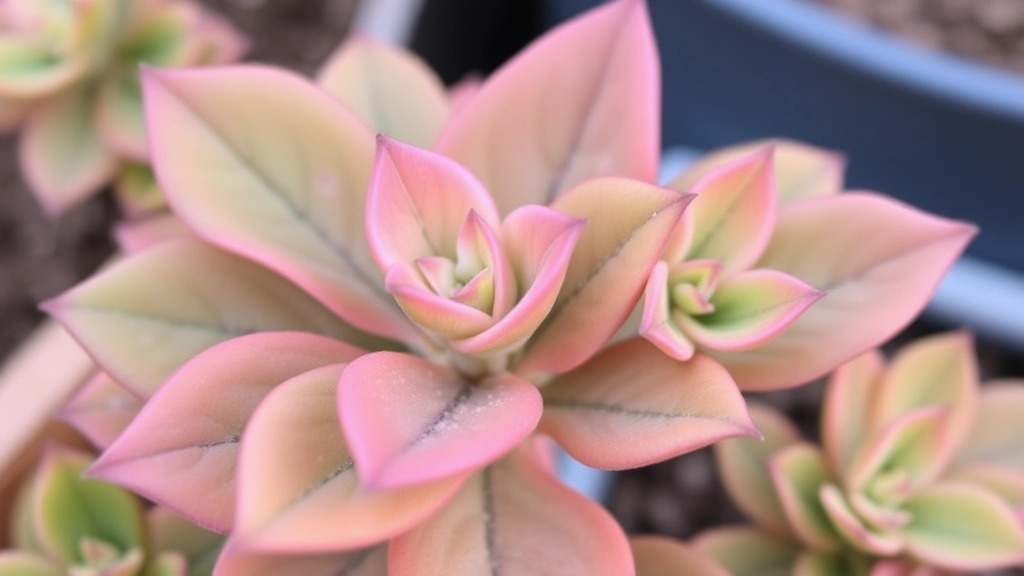Caring for Kalanchoe Blossfeldiana Leaves
When it comes to caring for Kalanchoe Blossfeldiana leaves, proper watering techniques are crucial. Overwatering can lead to root rot, so it’s essential to let the soil dry out between waterings. Ensure your succulent gets bright, indirect light to keep the leaves vibrant and healthy. If you notice any leaf discoloration, it might be due to incorrect light exposure or watering habits.
Pruning and Pest Management
Pruning plays a significant role in maintaining the health of Kalanchoe leaves. Regularly trim dead or damaged leaves to encourage new growth and prevent pest infestations. Speaking of pests, keep an eye out for common issues like aphids or spider mites, which can affect the leaves.
Propagation
For those interested in propagation, Kalanchoe Blossfeldiana can be easily propagated using leaf cuttings, making it a rewarding plant to grow and share.
Proper Watering Techniques for Kalanchoe Blossfeldiana Leaves
Are you struggling to keep your Kalanchoe Blossfeldiana thriving? One of the most common concerns for plant enthusiasts is how to water these beautiful succulents effectively.
Understanding Water Needs
Kalanchoe leaves require a careful balance of moisture. Overwatering can lead to root rot, while underwatering can cause the leaves to shrivel. Here’s how to get it just right:
- Frequency: Water your Kalanchoe when the top inch of soil feels dry. This generally translates to every 2-3 weeks, but it may vary with the seasons.
- Method: Use the soak-and-dry method. Water deeply until it drains from the bottom. Allow the soil to dry out completely before the next watering.
- Temperature: Ensure the water is at room temperature. Cold water can shock the plant.
Signs of Overwatering and Underwatering
Being able to read your plant’s signals is crucial.
- Overwatering: Yellowing leaves, mushy stems, and a foul smell from the soil.
- Underwatering: Wrinkled or shrivelled leaves, and a general lack of vitality.
Tips for Optimal Watering
- Use Well-draining Soil: This helps excess water escape, preventing root rot.
- Container Choice: Opt for pots with drainage holes to allow proper water flow.
- Humidity Considerations: Kalanchoe prefers low humidity. Avoid misting, as it can lead to fungal issues.
Light Requirements to Maintain Healthy Kalanchoe Leaves
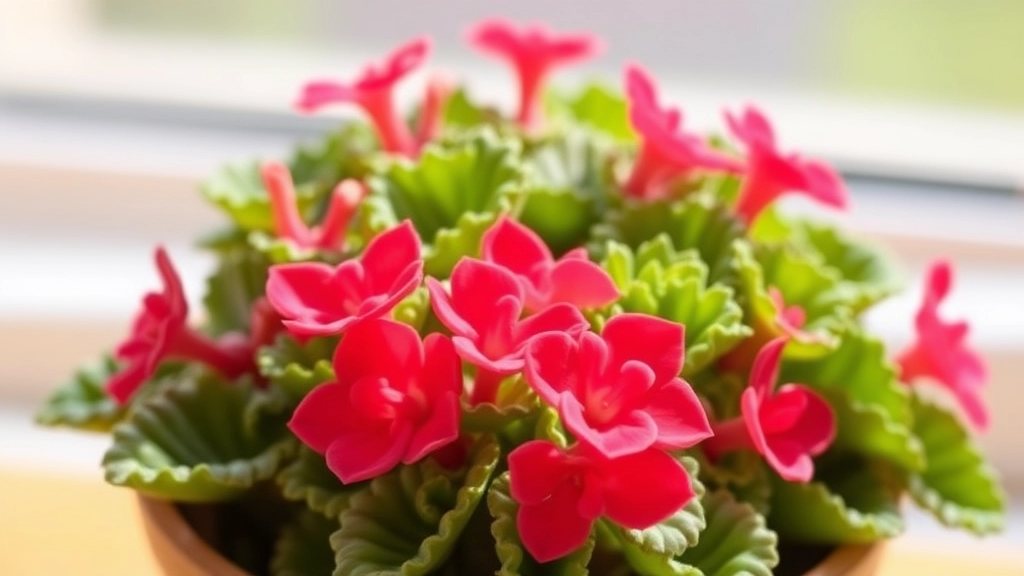
Are your Kalanchoe leaves looking a bit lacklustre? It might just be the light situation.
Kalanchoe Blossfeldiana loves a good dose of sunlight, and getting this right is key to keeping those leaves vibrant and healthy.
Ideal Light Conditions
- Bright Indirect Light: Kalanchoe thrives in bright, indirect sunlight. A windowsill that gets plenty of light but isn’t directly in the sun’s harsh rays is perfect.
- Avoid Direct Sunlight: Too much direct sunlight can scorch the leaves, leading to brown spots or crispy edges.
Signs of Improper Lighting
- Leggy Growth: If your plant is stretching towards the light, it’s craving more brightness.
- Yellowing Leaves: This could mean it’s not getting enough light.
Tips for Placement
- South or West-Facing Windows: These spots usually provide the best light.
- Rotate Your Plant: Give it a gentle twist every couple of weeks to ensure all sides get equal light exposure.
Seasonal Adjustments
- Winter Care: Days are shorter, so consider moving your plant closer to the window or using a grow light.
- Summer Caution: If you notice leaf burn, try moving it a bit further from the window during the hottest months.
How to Prevent Overwatering and Root Rot in Kalanchoe
One of the most common concerns for Kalanchoe owners is the risk of overwatering, which can lead to root rot.
Why Does Overwatering Happen?
- Poor drainage: If the pot doesn’t allow excess water to escape, the roots can drown.
- Frequent watering: Watering too often, especially in cooler months, can saturate the soil.
- Humidity: High humidity can slow down evaporation, leading to waterlogged conditions.
Tips to Prevent Overwatering:
- Use well-draining soil: A cactus or succulent mix is ideal, as it allows moisture to escape quickly.
- Choose the right pot: Ensure your pot has drainage holes. Terracotta pots are excellent because they absorb excess moisture.
- Watering schedule: Allow the top inch of soil to dry out completely before watering again. Typically, this means watering every 2-3 weeks, depending on the season.
- Check the roots: If you suspect overwatering, gently remove the plant from its pot and inspect the roots. Healthy roots are firm and white; mushy or brown roots indicate rot.
- Adjust your environment: If your home is humid, consider placing a dehumidifier nearby or moving your Kalanchoe to a drier area.
Signs of Overwatering:
- Yellowing leaves
- Soft, mushy stems
- A foul smell from the soil
Common Pests and Diseases Affecting Kalanchoe Leaves
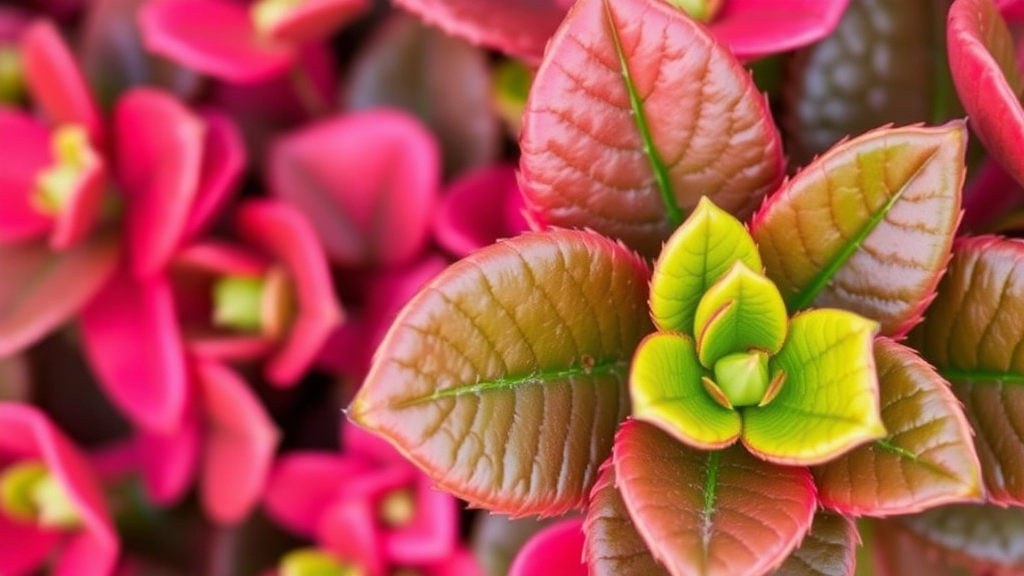
As we delve deeper into caring for Kalanchoe Blossfeldiana, it’s crucial to address the potential threats that can compromise the health of your plant’s leaves.
Pests to Watch For:
- Mealybugs
These tiny, white, cotton-like insects often hide in leaf joints and on the undersides of leaves.
They suck sap from the plant, leading to weakened growth and yellowing leaves. - Spider Mites
These minuscule pests thrive in dry conditions.
Look for fine webbing on the leaves and tiny yellow spots indicating damage. - Aphids
Small green or black insects that cluster on new growth.
They can cause stunted growth and distorted leaves.
Diseases to Consider:
- Powdery Mildew
A fungal disease presenting as a white, powdery coating on leaves.
It thrives in high humidity and poor air circulation. - Root Rot
Often a result of overwatering, leading to dark, mushy roots.
This can cause yellowing leaves and eventual plant decline.
Preventative Measures:
- Regular Inspection
Check your Kalanchoe weekly for signs of pests or disease.
Early detection can save your plant from severe damage. - Proper Watering
Ensure your watering routine is appropriate to prevent root rot.
Allow the soil to dry out between waterings. - Good Air Circulation
Place your plant in a spot with good airflow to reduce humidity and prevent powdery mildew.
The Role of Pruning in Maintaining Leaf Health
Are your Kalanchoe leaves looking a bit lacklustre? Pruning might just be the answer you’re looking for.
Pruning is essential for keeping your Kalanchoe Blossfeldiana healthy and vibrant. It encourages new growth and helps remove any dead or damaged leaves that can detract from the plant’s overall appearance.
Why Prune?
- Promotes Air Circulation: Pruning opens up the plant, allowing better airflow. This reduces the risk of fungal diseases.
- Encourages New Growth: Cutting back old leaves stimulates the plant to produce fresh, healthy foliage.
- Maintains Shape: Regular pruning helps maintain a tidy appearance, ensuring your Kalanchoe remains an attractive addition to your space.
When to Prune?
- After Flowering: The best time to prune is right after the blooming period. This timing allows the plant to focus its energy on leaf growth rather than flower production.
- Regular Maintenance: Check your plant periodically. If you notice any yellowing or damaged leaves, don’t hesitate to prune them away.
How to Prune?
- Use Clean Tools: Always use sterilised scissors or pruning shears to prevent disease transmission.
- Cut at the Base: Trim leaves at their base, avoiding damage to the surrounding healthy leaves.
- Remove Dead or Diseased Leaves: Be vigilant and remove any leaves that show signs of pests or disease.
Tips for Successful Pruning:
- Don’t Overdo It: Pruning should be moderate. Removing too many leaves at once can stress the plant.
- Observe Growth Patterns: Pay attention to how your plant responds to pruning. Adjust your techniques based on its growth.
By incorporating regular pruning into your care routine, you’ll not only enhance the aesthetic appeal of your Kalanchoe but also improve its overall health.
Propagation of Kalanchoe Blossfeldiana Using Leaf Cuttings
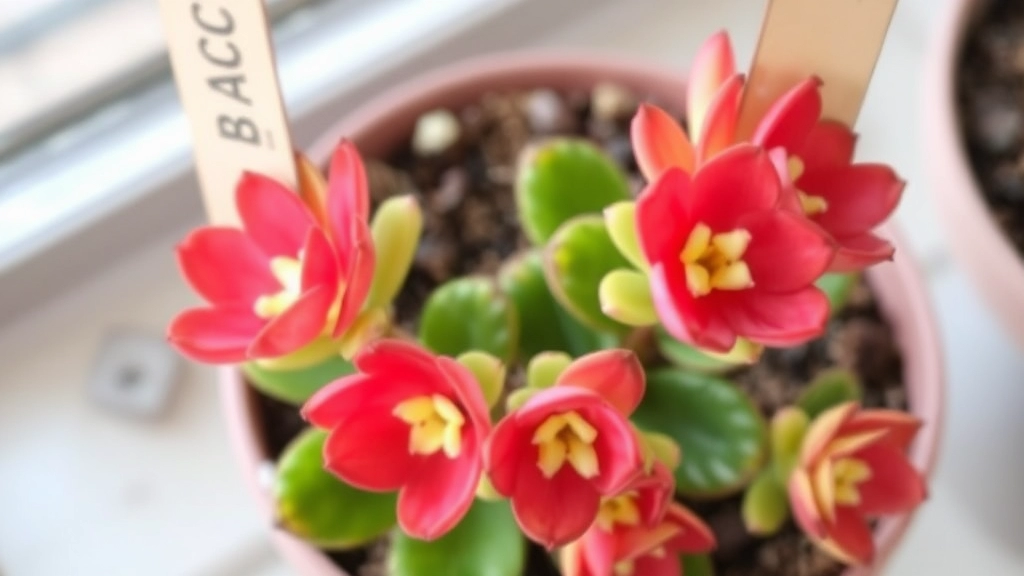
Have you ever wondered how to get more Kalanchoe plants without spending a fortune?
Well, propagating Kalanchoe Blossfeldiana from leaf cuttings is not only easy but also a rewarding way to expand your collection.
Step-by-Step Guide to Propagation
- Choose Healthy Leaves
Look for plump, vibrant leaves. Avoid any that are yellowing or damaged. Healthy leaves are key to successful propagation. - Make the Cut
Using a clean, sharp knife or scissors, cut the leaf at the base. Make sure to cut it cleanly to avoid damaging the plant. - Let Them Callous
Place the cut leaves in a dry, warm spot for a few days. This allows the cut end to callous over, which helps prevent rot when planted. - Prepare Your Soil
Use a well-draining soil mix. A cactus or succulent mix works wonders. You can also mix regular potting soil with sand for better drainage. - Plant the Cuttings
Once the leaves have calloused, gently press them into the soil, cut side down. You don’t need to bury them deep; just enough to hold them in place. - Water Sparingly
After planting, give them a light misting. Avoid soaking the soil; too much water can lead to rot. - Provide Proper Light
Place the cuttings in bright, indirect light. Too much direct sunlight can scorch them, while too little can hinder growth. - Be Patient
In a few weeks, you should see new growth. Once the roots develop, you can treat them like mature plants.
Why Propagate?
Not only does propagation save you money, but it also gives you the chance to experiment with different potting styles or even share with friends.
Plus, watching new plants grow from a single leaf is incredibly satisfying.
How to Revive Kalanchoe Leaves Turning Yellow or Brown
Have you noticed your Kalanchoe leaves turning yellow or brown? This can be alarming, but don’t worry; there are ways to bring your plant back to life.
Identify the Cause
First, it’s crucial to determine why your Kalanchoe is showing signs of distress. Common reasons include:
- Overwatering: Too much water can lead to root rot, causing leaves to yellow.
- Underwatering: Conversely, lack of water can also result in brown, shriveled leaves.
- Poor Lighting: Insufficient light can weaken the plant, leading to discolouration.
- Pests: Check for any unwanted guests like aphids or mealybugs.
Steps to Revive Your Kalanchoe
Once you’ve identified the cause, you can take specific actions:
- Adjust Watering:
- If overwatered, allow the soil to dry out completely before watering again.
- If underwatered, give your plant a thorough watering, ensuring excess water drains out.
- Improve Lighting:
- Move your Kalanchoe to a brighter location, but avoid direct sunlight, which can scorch the leaves.
- A south or west-facing window is ideal for optimal growth.
- Inspect for Pests:
- Check the undersides of leaves for pests.
- If found, treat with insecticidal soap or neem oil.
- Prune Damaged Leaves:
- Use clean scissors to remove any yellow or brown leaves.
- This helps the plant focus its energy on healthy growth.
- Repot if Necessary:
- If root rot is suspected, gently remove the plant from its pot.
- Trim away any blackened roots and repot in fresh, well-draining soil.
Monitor Progress
After taking these steps, keep an eye on your Kalanchoe. Recovery may take time, but with the right care, your plant can bounce back.
Best Soil and Drainage Practices for Strong Leaf Growth
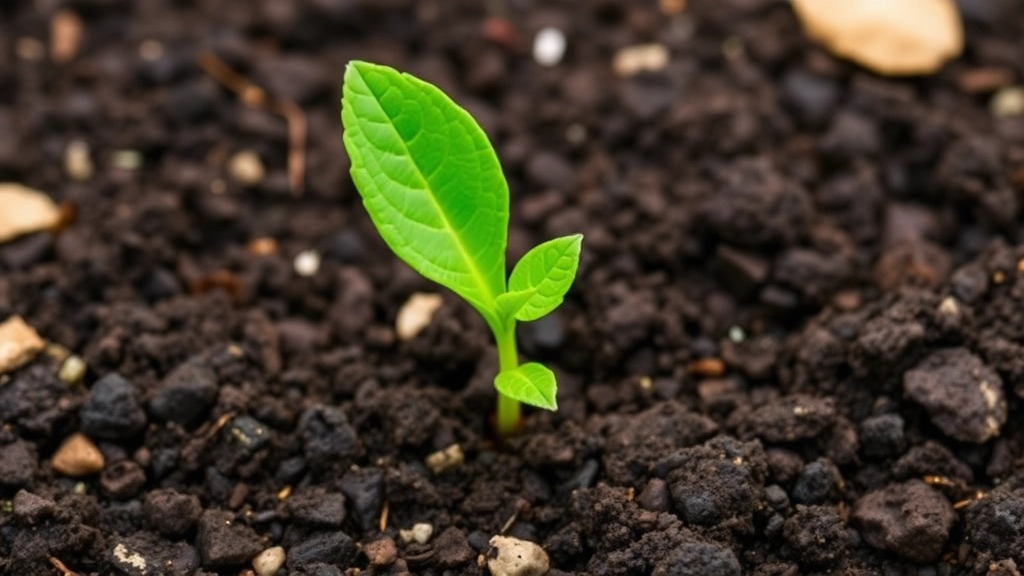
Are your Kalanchoe leaves looking a bit sad?
One of the key factors in keeping those vibrant leaves healthy is the right soil and drainage.
1. Soil Type
Kalanchoe Blossfeldiana thrives in well-draining soil.
- Cactus Mix: A pre-mixed cactus soil works wonders.
- DIY Mix: Combine potting soil, sand, and perlite in equal parts for a custom blend.
2. Drainage
Proper drainage is crucial to prevent water from sitting at the roots.
- Pot Choice: Use pots with drainage holes. Terracotta pots are excellent as they absorb excess moisture.
- Layering: Consider adding a layer of small stones or gravel at the bottom of your pot. This helps with drainage.
3. Watering Technique
Even with the best soil, overwatering can be a killer.
- Check Moisture: Stick your finger about an inch into the soil. If it feels dry, it’s time to water.
- Watering Schedule: Generally, watering every two weeks is a good rule, but adjust based on your environment.
4. Fertilisation
While soil is important, don’t forget about feeding your Kalanchoe.
- Balanced Fertiliser: Use a diluted liquid fertiliser during the growing season (spring and summer).
- Frequency: Fertilise every 4-6 weeks for optimal growth.
Seasonal Care Tips for Kalanchoe Blossfeldiana Leaves
As we transition through the seasons, it’s crucial to adapt our care for Kalanchoe Blossfeldiana to ensure vibrant, healthy leaves. You might wonder how to keep your plant thriving year-round. Here are some essential tips to guide you through each season.
Spring Care
- Increase Watering: As temperatures rise, your Kalanchoe will need more water. Ensure the soil dries out between waterings.
- Repotting: This is an ideal time to repot if your plant has outgrown its container. Choose a pot that allows for good drainage.
- Fertilising: Use a balanced fertiliser to promote new leaf growth.
Summer Care
- Light Exposure: Ensure your Kalanchoe receives plenty of indirect sunlight. Too much direct sun can scorch the leaves.
- Humidity Check: Keep an eye on humidity levels. If your home is dry, consider misting the leaves occasionally.
- Pest Inspection: Regularly check for pests like mealybugs or aphids, which can thrive in warm weather.
Autumn Care
- Watering Adjustments: As temperatures cool, reduce watering frequency. Allow the soil to dry out more between waterings.
- Pruning: Trim any dead or wilted leaves to encourage healthy growth and improve air circulation.
- Preparing for Dormancy: Begin to prepare your Kalanchoe for the upcoming winter by reducing fertilisation.
Winter Care
- Light Requirements: Position your plant near a bright window to maximise light exposure during shorter days.
- Watering Sparingly: Kalanchoe enters a dormant phase in winter, so water less frequently. Monitor for signs of overwatering.
- Temperature Considerations: Keep your plant in a warm environment, ideally above 10°C, to prevent leaf drop.
FAQs on Kalanchoe Blossfeldiana Leaves
What type of light does Kalanchoe Blossfeldiana need?
Kalanchoe Blossfeldiana thrives in bright, indirect light. A windowsill that gets plenty of light but isn’t directly in the sun’s harsh rays is ideal.
Can Kalanchoe leaves handle direct sunlight?
No, too much direct sunlight can scorch the leaves, leading to brown spots or crispy edges. It’s best to avoid placing your plant in direct sun.
What are the signs that my Kalanchoe is not getting the right amount of light?
If your plant is stretching towards the light, it’s craving more brightness. Yellowing leaves could indicate it’s not getting enough light.
Where should I place my Kalanchoe for optimal light?
South or west-facing windows usually provide the best light. Additionally, rotating your plant every couple of weeks ensures all sides get equal light exposure.
How can I adjust lighting for my Kalanchoe during different seasons?
In winter, consider moving your plant closer to the window or using a grow light due to shorter days. In summer, if you notice leaf burn, move it a bit further from the window during the hottest months.
What pests commonly affect Kalanchoe leaves?
Common pests include mealybugs, spider mites, and aphids. These pests can cause weakened growth, yellowing leaves, and stunted growth.
What diseases should I watch out for on my Kalanchoe leaves?
Powdery mildew and root rot are common diseases. Powdery mildew presents as a white, powdery coating on leaves, while root rot results from overwatering and causes dark, mushy roots.
How can I prevent pests and diseases on my Kalanchoe?
Regular inspection, proper watering, and good air circulation are key preventative measures. Check your plant weekly, allow the soil to dry out between waterings, and ensure good airflow to reduce humidity.
Can I propagate Kalanchoe Blossfeldiana from leaf cuttings?
Yes, propagating Kalanchoe from leaf cuttings is easy and rewarding. Choose healthy leaves, let them callous, and plant them in well-draining soil. Provide bright, indirect light and water sparingly.
What type of soil is best for Kalanchoe Blossfeldiana?
Kalanchoe thrives in well-draining soil. A cactus mix or a DIY mix of potting soil, sand, and perlite works well.
What are the best practices for watering Kalanchoe?
Check soil moisture before watering. If the soil feels dry an inch deep, it’s time to water. Generally, watering every two weeks is a good rule, but adjust based on your environment.
How should I fertilize my Kalanchoe?
Use a diluted liquid fertilizer during the growing season (spring and summer). Fertilize every 4-6 weeks for optimal growth.
References
-
The Spruce: Kalanchoe Blossfeldiana Profile
-
Gardening Know How: Caring for Kalanchoe
-
Old Farmer’s Almanac: Kalanchoe Plant Guide
